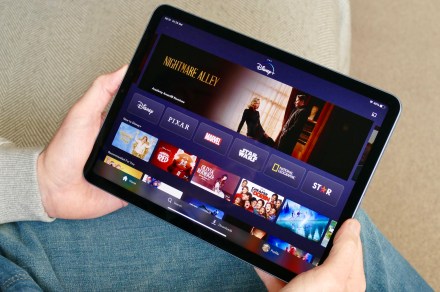The most famous flash player
Adobe Flash Player was the silent super hero of the computer software world. Running on the Adobe Flash platform, the player allowed you to view multimedia content, execute rich Internet applications and stream audio and video files. It will even support ShockWave Flash files created on either Adobe Flash Pro, Adobe Flash Builder or FlashDevelop. Many of the video games you spent hours playing in childhood were powered by Flash.
The popular browser plug-in eventually evolved into a must-have program on PCs and smartphones. However, it has been over twenty years since Flash Player was first released, and in some respects it has not remained completely with the times. Critics have often criticized the software’s heavy consumption of battery power on mobile devices, the vulnerability to data breaches, and its closed platform model. In fact, its number of active users has gone down in the past few years because new web standards have less use for Flash Players. But even with these trends, the Android Adobe Flash Player application still has a large following and supports a wide variety of files.
Beautiful visuals
In the same way a broadway play has stage hands, your Android device has Adobe Flash Player. Its in charge of projecting all the beautiful visuals you see on your screen.
Adobe Flash Player will execute and display content from your SWF file. It won’t offer you built-in tools to modify the document at runtime, but the desktop application can launch programs written in ActionScript. This will enable options to manipulate text, data, vectors, raster, audio and video files even while the file is running. Note it is also dependent on Adobe Integrated Runtime - or AIR - to help your Android’s file system, native client extensions, window and hardware work together.
The graphics and multimedia platform began with supporting raster and vector graphics. Now, it supports decode and playback on other widespread formats on both smartphones and computers.
- MP3: As early as Flash Player 4, you can access and play back MP3 files via HTTP or through an embedded SWF file
- FLV: Flash Video is Adobe Systems and Macromedia’s home-grown format. It serves as a container file, so it can support multiple video codecs like H.264, VP6 and Sorenson Spark. This file is definitely the most popular one as it’s used by your favorite media websites - Youtube, Hulu, and Yahoo! Video. You can also stream FLV files through any server-side software using Adobe Flash Media Server
- PNG: Portable Network Graphics are known for their superb quality. With Flash, expect support for both 24-bit and 32-bit variants of PNG files
- JJPEG: Creators and artists can use Flash to provide decoding and rendering for services for compressed JPEG images. But of course, this feature is available only on the desktop version of Flash Player. The Android app is limited to displaying the image
- GIF: If you loved GIFs as a kid, thank Flash player. The amusing looping videos wouldn’t be here today without it
Providing native support for four vital data formats
XML: If you have an XML web page, you’re in luck. Flash player has been supporting it since version 8. The format’s data is stored as XML Document Object Model, so feel free to tinker with it on the desktop version of ActionScript.
JSON: The eleventh version of Flash Player can import and export data on your JavaScript Object Notation files - allowing you to access certain web services and JavaScript programs.
AMF: Action Message Format is Flash’s equivalent to browser cookies. All your application data can be stored on your Android, and can even be transferred across other Flash applications. This will reduce your need to process or validate data on JSON and XML files.
SWF: SWF and AMF files are Flash’s most important formats since this is the way it exchanges data with server side applications.
Where can you run this program?
Adobe Flash Player runs on Android OS, however there are also versions for most other platform devices (Mac, Linux, etc).
Is there a better alternative?
The late great Steve Jobs predicted that the future of the internet would not depend on Flash but on HTML5. Since then, Apple devices blocks you from any Flash Player, and Android has removed the application on the Google Play Store. There are ways to install Flash on your Android phone, but it’s safer to download an app that is continuously being updated by its developer.
So say goodbye Adobe Flash Player and say hello to Photon Flash Player and Browser. The newest iteration of Flash basically does it all: supports a wide array of file formats, Flash games and VPN browsing. Let’s suppose you’re feeling nostalgic and you want to play classic web games like Super House of Dead Ninjas or Frog Fractions; Photon will not only allow you to play it, but it also ensures that you’re connected to a private and secure network.
What is replacing Adobe Flash Player?
Adobe Flash Player is no longer in use and has been replaced by more modern web technologies. The primary replacement is HTML5, the current standard for building interactive and multimedia-rich web content. HTML5 offers cross-platform compatibility, improved security, and doesn't require any additional plugins since it's built into all modern browsers.
For specific use cases, other technologies are also replacing Flash. WebAssembly (Wasm) provides near-native performance for demanding applications like games, while JavaScript frameworks and libraries streamline the development of complex web interfaces. WebGL allows for rendering impressive 3D graphics within a web browser.
If you want to access old Flash content, you can use tools like Ruffle, a Flash Player emulator, or check out projects like BlueMaxima's Flashpoint, which are dedicated to preserving Flash games and animations. It's important to note that major browsers no longer support the Adobe Flash Player plugin due to security risks, so converting legacy Flash content to HTML5 or other compatible formats is the most secure and future-proof option.
Why did Adobe remove Flash Player?
Adobe removed Flash Player primarily due to its persistent security problems. It was constantly plagued by vulnerabilities that hackers exploited, making it a major entry point for malware and other cyberattacks. At the same time, open web standards like HTML5, WebGL, and WebAssembly became more powerful. These technologies offered the ability to create rich web experiences similar to Flash, but were more secure, efficient, and built directly into browsers.
Flash also struggled with mobile devices, consuming battery life and performing poorly. As the web shifted towards mobile-first experiences, Flash became increasingly outdated. Major browsers began dropping support for Flash, signaling a lack of industry backing for the technology. Recognizing these challenges and the shift towards a more open and secure web, Adobe ultimately decided to discontinue Flash Player.
Our take
Adobe Flash Player was the unassuming but powerful tool that you depended on for many years. It may not be as relevant anymore, but it’s important to remember that it brought to life every file, page, and game you needed in the early days of digital history. The declining support from its developers and other platforms indicates perhaps that there are other programs out there which are more suited to the challenges of the future.
Should you download it?
No. Play it safe and download Photon Flash Player and Browser.





